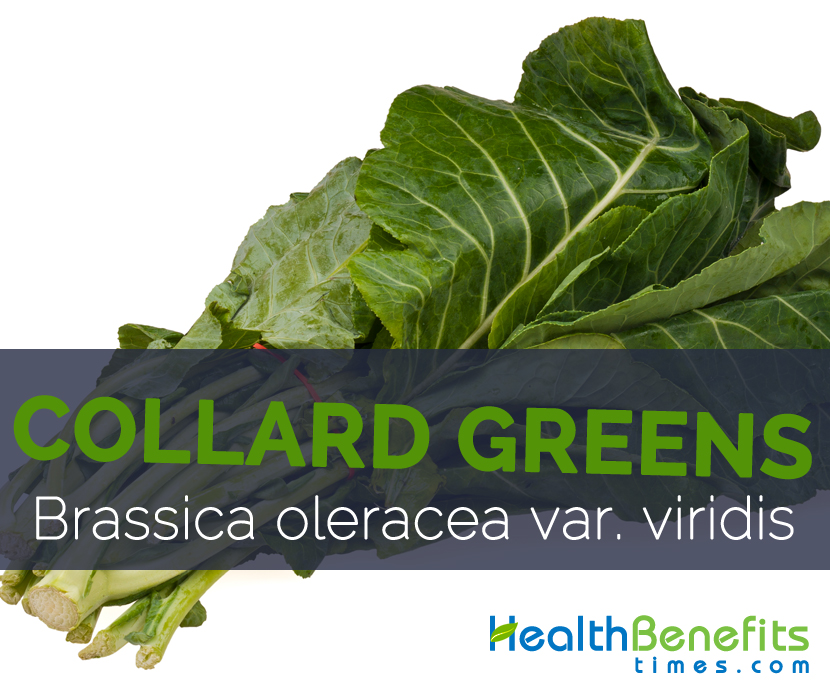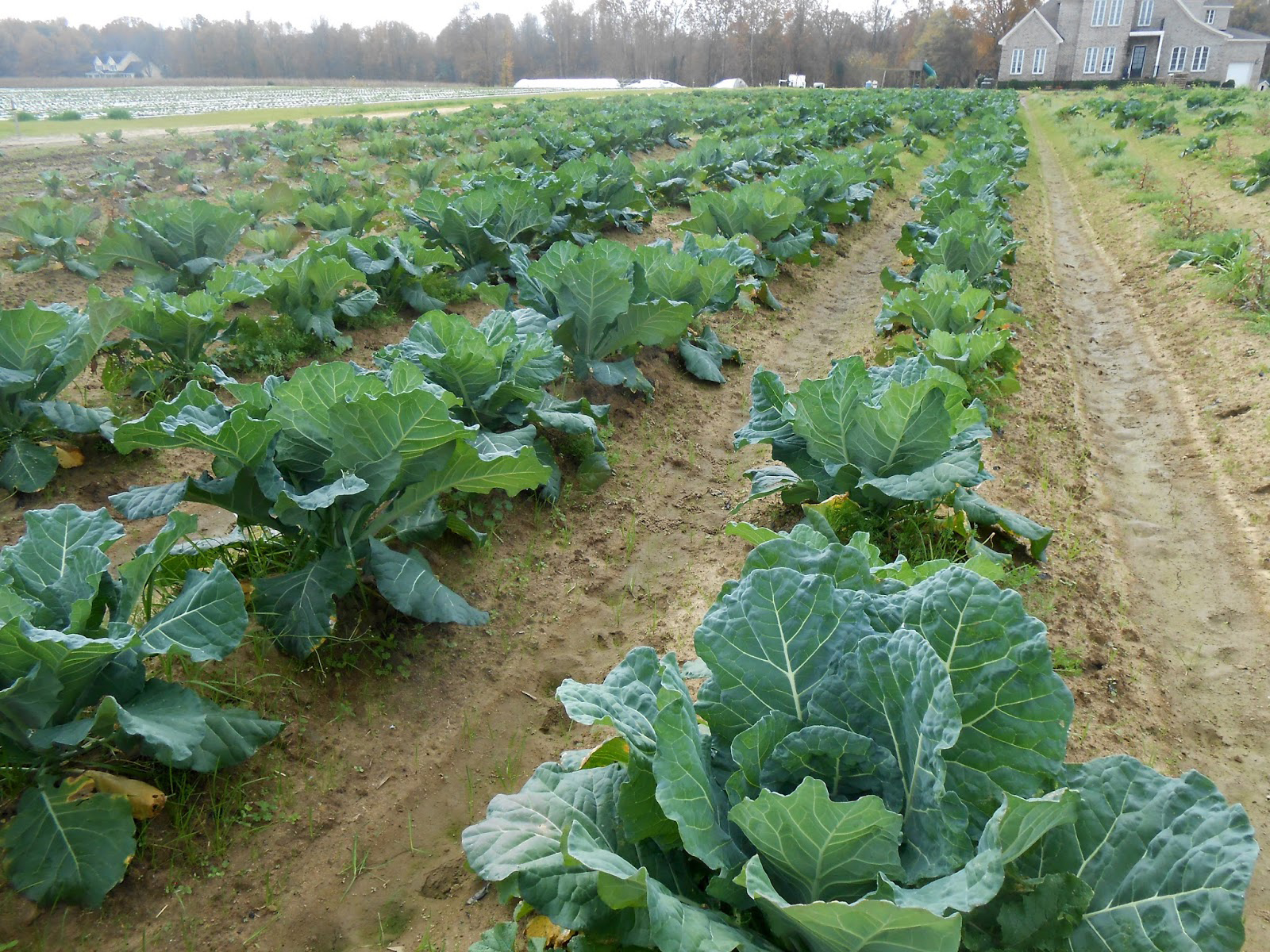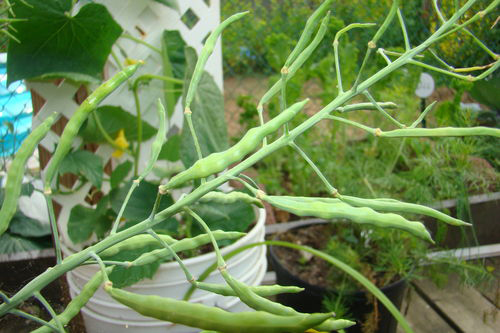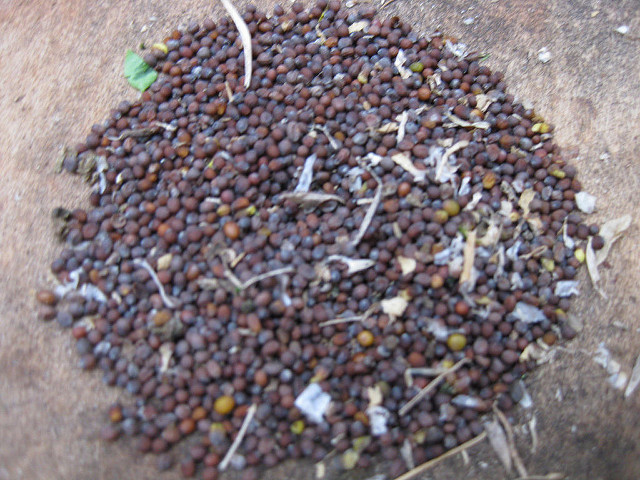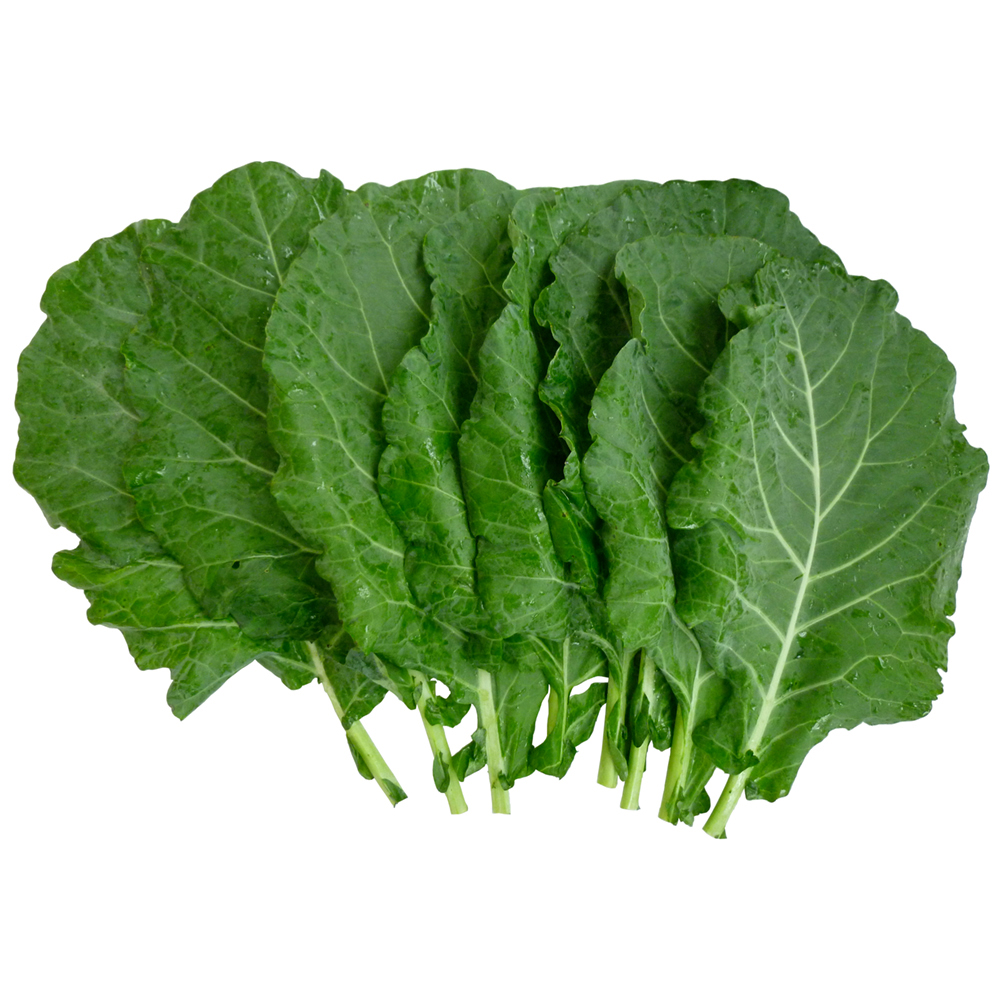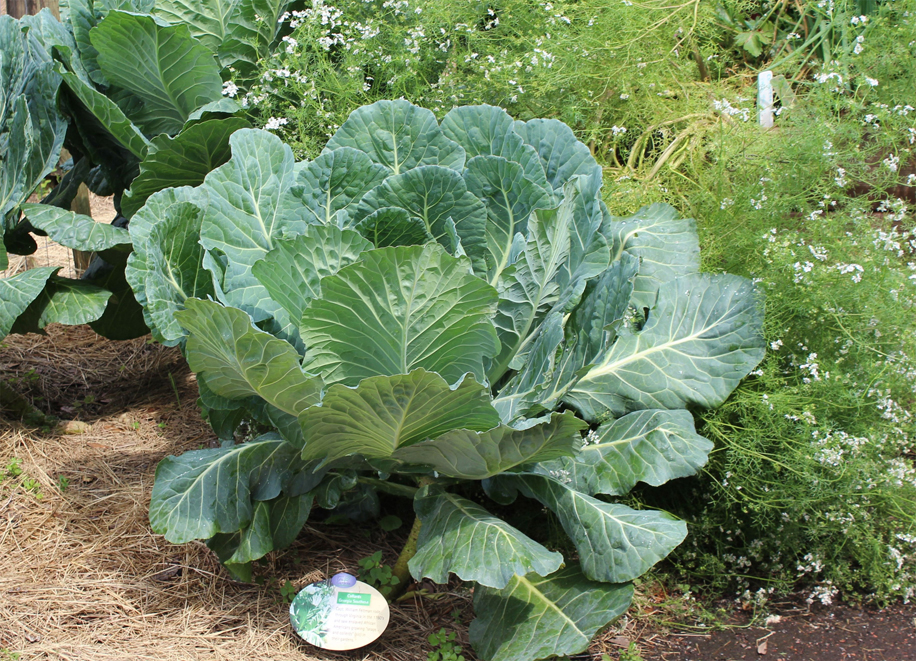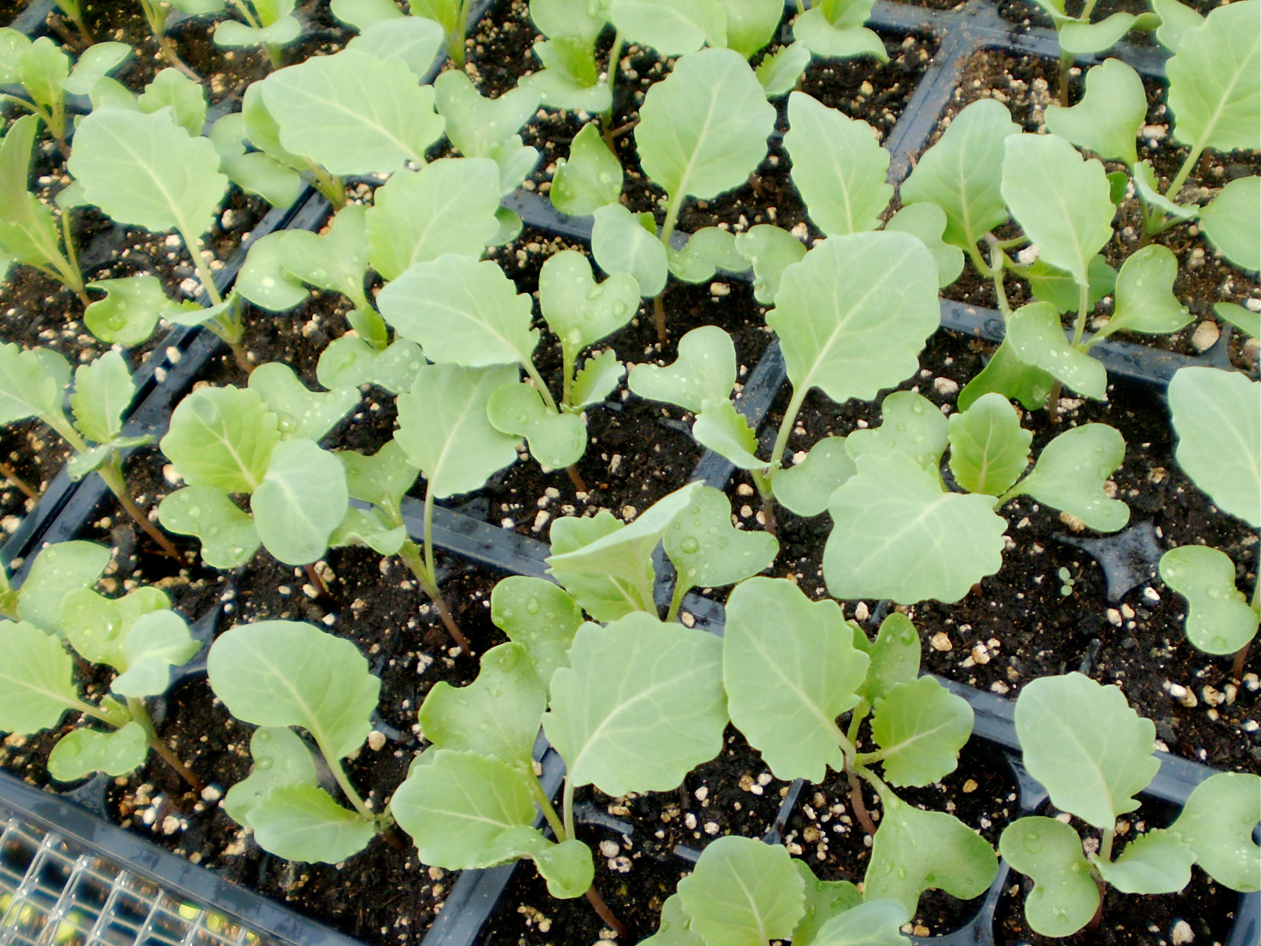Plant
Collard greens are an herbaceous annual or biennial plant which can grow as much as 3-4 feet in height. It is found growing in cool, moist locations and get at least six hours of direct sunlight every day and prefers fertile, moist, well-drained soil rich in organic matters. Roots of collard greens may easily reach depths of 2 feet of more and have sturdy stem. Leaves are normally large, broad, and paddle-shaped and are extremely delicious. A flower of collard greens is small, yellow arranged in the pyramid-shaped clusters. Fruits are dry capsules known as siliques which consist of numerous tiny seeds.
Leaves
A leaf of collard green is considered to be main part of the plant which is nutritious as well as healthy. It is normally huge, broad, paddle-shaped, flat, smooth leaves along with irregular lobes and long petioles and with contrasting juicy white ribs and veins. Leaves are green, green blue or purple colored. It has bitter nutty flavor and unique moderate, smoky taste. Smaller leaves are more tender and tasty compared with larger one. Larger leaves are somewhat bitterer flavor and more fibrous texture. They taste sweeter after a light frost. They are mostly grown as a source of food. In some parts of the world, collard greens are cultivated in ornamental purposes.
History
Collards are most likely originated in the eastern European or Asia Minor region and now days cultivated almost all parts of the cooler temperate regions due to its wonderful taste and nutrition contents.
Nutritional Value
Apart from their distinctive moderate, smoky taste Collard green is a good source of nutrients, vitamins and minerals. Consuming 190 gram of collard green offers 772.5 µg of Vitamin K, 722 µg of Vitamin A, 0.969 mg of Manganese, 34.6 mg of Vitamin C, 2.15 mg of Iron, 268 mg of Calcium, 7.6 g of Total dietary Fiber and 0.243 mg of Vitamin B6. Moreover many Amino acids like 0.051 g of Tryptophan, 0.141 g of Threonine, 0.163 g of Isoleucine, 0.247 g of Leucine and 0.192 g of Lysine are also found in 190 gram of the Collard greens.
Health benefits of Collard greens
Like cabbage, a collard green is a cruciferous vegetable and has many health benefits. Collards are one of the most nutritious vegetables. They are low in calories and high in protein, vitamins, and minerals. According to numerous medical studies, consuming collard greens frequently may help prevent, treat or even cure the several health related problems.
1. Digestive Support
Collard green consists of over 7 gram of fiber in one single cup which makes this cruciferous vegetable number one natural choice for digestive system support. Fiber content is only one digestive support mechanisms of collard greens. Research have determined that the sulforaphane made from a glucosinolate in collard greens helps to defend the health of our stomach lining simply by stopping bacterial overgrowth and of bacterium to our stomach wall.
2. Prevent Cancer
Collard greens, kale, spinach and Swiss chard are some of the popular leafy vegetables which are full of essential nutrient. Collard greens consists of high level of antioxidant, it helps to detoxify the body and reduces inflammation which make this vegetable a powerful natural cancer fighter and preventer.
According to the National Cancer Institute, glucosinolates – a large group of sulfur-containing compounds is the main secret behind cancer killing ability of collard greens as well as other cruciferous veggies. Indoles, thiocyanates and isothiocyanates present in Collard greens break down the chewing and digestion process into biologically active compounds which avoid the growth of cancer cells. Indole and isothiocyanate have been most often inspected for their anticancer effects.
Powerful glucosinolates are also known to reduce inflammation, prevent tumor formation and metastasis, reprogram cancer cells to die off, deactivate carcinogens, and contain antibacterial and antiviral properties.
Prostate cancer: Research carried out by Cohort in Netherlands, United states and Europe have observed a wide range of daily cruciferous vegetable consumptions and discovered little or no connection with prostate cancer risk. Research has also discovered that people who consumed huge amount of cruciferous vegetables had a low chance of prostate cancer.(1), (2), (3), (4), (5)
Colorectal cancer: Research done in Netherlands and United States by Cohort have discovered no association between cruciferous vegetable intake and colorectal cancer risk. However Netherlands research had discovered reduced risk of Colon cancer in women who had a high intake of cruciferous vegetables.(6), (7), (8), (9)
Lung cancer: Cohort researches in Netherlands, United States and Europe have different results. Majority of the studies have reported little connection but one US study done with data from the Nurses’ Health Study and the Health Professionals’ Follow-up Study—presented that ladies who consumed more than 5 servings of Cruciferous vegetable each week had a lower chance of lung cancer.(10), (11), (12), (13)
Breast cancer: Research has discovered that women who ate large quantity of cruciferous vegetables had a lower risk of breast cancer. Meta-analysis of studies conducted in the Sweden, United States, Canada and Netherlands discovered no connection between cruciferous vegetable intake and breast cancer risk. Additional research done by Cohort in US showed a weak association with breast cancer risk.(14), (15), (16)
3. Support Cardiovascular Health
Collard greens consists of considerable amount of vitamin K which is essential for reducing inflammation as well as protecting cells that line blood vessels like arteries and veins.
Vitamin K is proven to prevent calcification of arteries, which is one of the leading reasons of heart attacks. It works by carrying calcium out of the arteries and not letting it to form into hard, dangerous plaque deposits. It’s a natural cure for high blood pressure and decreases the danger of health conditions such as heart attack, stroke and diabetes.
https://www.youtube.com/watch?v=Aobfx61YEVc
How to Eat
- Collard greens can be consumed raw in salads or on sandwiches or wraps, braised, sautéed, boiled, or added to soups and casseroles.
- Collards are consumed on New Year’s Day, with black-eyed peas or field peas and cornbread, to confirm wealth in the coming year.
- Collard greens can also be thinly sliced and fermented to make collard kraut frequently cooked with flat dumplings.
- Thinly sliced collard greens are the main add-ons of a popular dish known as “sima” or “ugali” in Congo, Tanzania and Kenya (East Africa).
- It is lightly sauteed in oil till tender, flavored in onions and seasoned with salt and is served either as main accompaniment or as a side dish with favorite meat.
- Collard greens are common accompaniments of fish and meat dishes in Portuguese and Brazilian cuisine.
- They are a typical side dish for feijoada, a common pork and beans-style stew.
- Thinly sliced collard greens are the main component of a popular Portuguese soup, caldo verde.
- Collard greens are included in nearly every meal, with both leaves and roots consumed in Kashmir Valley.
- Roots and leaves are cooked together or separately.
- Common dish haak rus, a soup of whole collard leaves cooked in water, salt and oil along with many other spices, usually consumed with rice.
- Leaves are also cooked with meat, fish or cheese.
- Collard leaves and roots are fermented to form a very popular pickle called haak-e-aanchaar during winter.
Precautions
- Collards consist of goitrogens, which may cause swelling of the thyroid gland.
- Individuals with kidney as well as gall bladder problems or even stones need to prevent ingesting them as extreme oxalates are present in Collard green that may crystallize.
- Collard greens contains vitamin k which plays a vital role in blood clotting, therefore people that are on blood thinning medications should be careful while consuming Collard green.
Scientific Classification Url
http://www.gardenplantsvs.com/en/scientific-classification-of-collard-greens/model-631-10.
References:
http://www.nutrition-and-you.com/collard-greens.html
https://en.wikipedia.org/wiki/Collard_greens
http://www.all-creatures.org/recipes/i-collardgreens.html
http://www.britannica.com/plant/collard
http://www.softschools.com/facts/plants/collard_greens_facts/1555/
http://aggie-horticulture.tamu.edu/vegetable/files/2010/10/E-506_collard_greens.pdf
Comments
| Collard Greens Quick Facts | |
|---|---|
| Name: | Collard Greens |
| Scientific Name: | Brassica oleracea var. viridis |
| Origin | Eastern European or Asia Minor region |
| Colors | Green, green blue or purple. |
| Shapes | Large, broad, paddle-shaped, flat, smooth leaves with long petioles |
| Taste | Distinctive moderate, smoky taste |
| Calories | 63 Kcal./cup |
| Major nutrients | Vitamin K (643.75%) Vitamin A (103.14%) Manganese (42.13%) Vitamin C (38.44%) Iron (26.88%) |
| More facts about Collard Greens | |
| Rank | Scientific Name & (Common Name) |
|---|---|
| Kingdom | Plantae (Plants) |
| Phylum | Magnoliophyta |
| Class | Magnoliopsida |
| Order | Brassicales |
| Family | Brassicaceae |
| Tribe | Brassiceae |
| Genus | Brassica |


